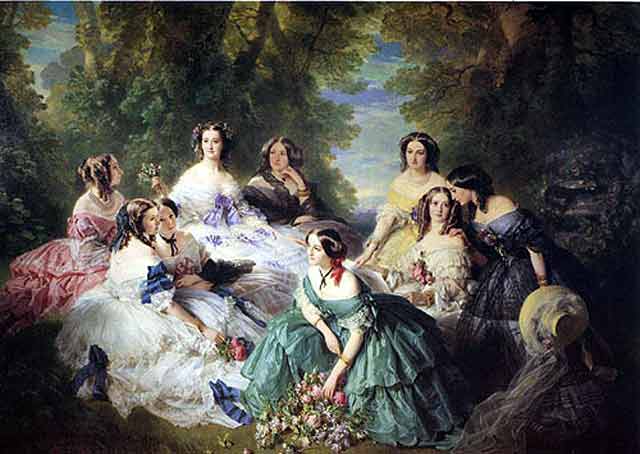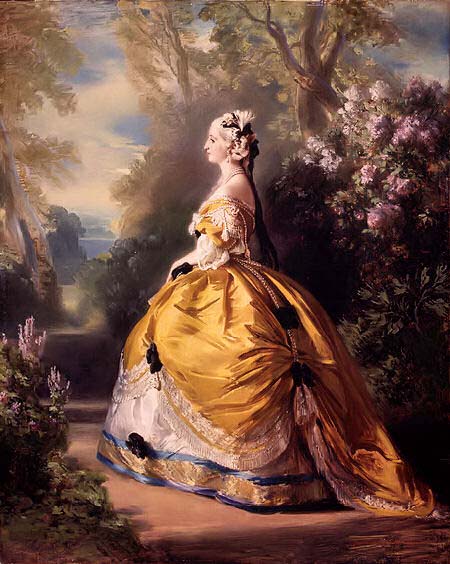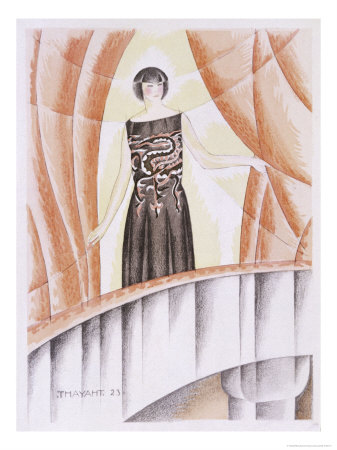
Lots of designers now and in the past were and are inspired by the past. In Dutch there is a very, very 'old fashioned' saying "fashion is like a barrel when it is full turn it around"(in Dutch this rhimes).
As an Art History student this particularly interests me, because much of the knowledge we have of fashion before the emergence of photography comes from 'Art'.
When I saw a picture of some late 30's Vionnet gowns I was on my part inspired to write this entry.
First I'd like to give an example of a more known fashion photgraph of a Vionnet gown(see picture above). I love this picture in its own right but when I saw it I immediately thought "Ancient Greek and Hellenistic Sculpture". There is a Greek style of around the 2nd century that is called "wet drapery style". One of the best examples of this style is the Pergamon altar that is now in Berlin. The photograph closely resembles this particular style known for the abundance of draperies and dramatic postures.

Another example of this style is the Nike(as in the goddess of victory) statue that is now in the Louvre. It is quite clear the Greek/Hellenistic statues were an inspiration. Ofcourse this is not the first time classical Greek dress was an inportant influence in fashion, around 1800 the empire dresses were also modelled after ancient Greeks dress.

Then over to the picture that was the original inpsiration for writing this.
Is was published in 1938 in Harpers Bazaar. At first you can clearly see the more puffy style of Vionnet in the late 30's (as opposed to her famed sleek bias cuts of the years before).

Secondly I thought: Empress Eugenie. Eugenie was married to NapoleonIII of France in the middle of the 19th century. The photograph remembered me of this painting of Eugenie and her ladies in waiting. I found the dresses are called 'Winterhalter Dresses'after the painter of this painting Winterhalter.


Eugenie was an important style icon in her days and she was also inspired by the past. Marie-Antoinette was a big example for her. In this portrait Eugenie is painted in 18th century style.

Here is a portrait of Marie-Antoinette.

In 1850's/60's Eugenie promoted full skirts and all the fluff and puff of 18th century fashion (a fashion the formentioned empire style opposed to). The mid 19th century volume in skirts was ofcourse differntly shaped (by the crinoline) than the 18th century example (with paniers) but a style of the past is almost never copied exactly. Important is the feel of it, the evocation of the past, the nostalgia if you like, but always with reminders of the fact that this is not the past but 'now'. When compairing the two portraits you can see the portrait of Eugenie is not from the 18th century: 19th century beauty ideals shine through, the dress if off shoulder and in a 1860's oval shape with more volume at the back. This principle of emulation is also well known in art history.
Coming back to Vionnet: She used different styles of the past as an inspiration eventhough these styles might have been a sequence counterreactions against eatch-other in the past.
Well, this was a bit of a long entry with a lot of writing in an almost academic style. I'm under the influence of all the articles I'm reading for my studies. While writing this enty I almost automatically wanted to start referncing to sources etc.:P
Just one last picture of a Vionnet dress, very Art Deco(with some Chinese influences to be absolutely correct), inspired by her own age and the drawing naturally executed by a then contemporary artist.


Geen opmerkingen:
Een reactie posten